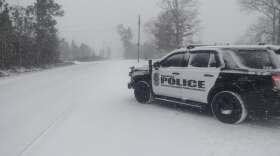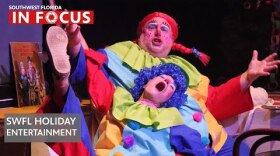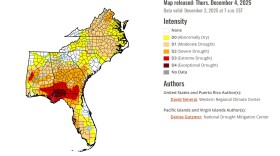Hendry County is investing money to improve the look and preserve some of the history of a little-known community.
It's called Harlem and it's about 60 miles east of Fort Myers, and not far from Clewiston in the northeastern corner of Hendry.
Harlem will celebrate its 100th anniversary next year.
The community has about 2,500 people, almost all Black, according to the 2020 census. More recent information from a website called Data USA put the current figure at just over 3,000. The per-person income is below the federal poverty level, although recent statistics from the Data USA group show a sizeable increase in household income in the past few years.
The place dates to 1926, when sugar companies set aside land outside Clewiston for Black sugar cane workers. Many of the workers came from the Caribbean, where they learned how to grow and harvest sugar in the island cane fields. The companies gave the place the rather dull name of Townsite.
But in the roaring '20s, the music of Black artists such as Duke Ellington reached Hendry County. The African-American renaissance in Manhattan, New York, received attention. So the settlers in Florida re-named their town Harlem.
Jerome Nicholls was born there 46 years ago. He left for the Army, said he suffered disabling wounds in the Iraq war, and returned to what he describes as a caring community:
"If you're in need and you ask, and I have it, you can get it," he said. "The culture here is to support each other, help each other."
Government is stepping up to help Harlem, too, according to Hendry County Commission Chairwoman Emma Byrd. She lives in Harlem, and said the county is budgeting money to put in sidewalks on three streets there.
"So we are trying to clean it up, beautify it, and work on infrastructure," she said.
Byrd also said Hendry has gotten $1.5 million in grants to restore some of the old Harlem Academy buildings. It was the private, all-Black school in town, when public schools were all-white.
The academy closed in 1971, when Hendry schools were integrated. A day care operated at the academy for a while, but closed during COVID a few years ago.
Now the buildings are deteriorating, and Hendry wants to refurbish and save at least some of them for history.
"It's a missing piece," Byrd said. "I'd love to see it restored. As long as we know where we come from, we will know where we are going."
Byrd said she would love to see a day care return to the academy buildings.
Hendry County also has provided a pool, gymnasium, ball fields and a library for Harlem.
Despite the government help, people in the community have learned to live by the slogan, neighbor helping neighbor. That attitude convinced Phillip Forde to move back to Harlem, after spending 30 years working in much bigger, and busier, Palm Beach County.
"It's friendly. The only word I can come up with is neighborliness, but I need another word to describe it," Forde said. "Yes, close-knit community, yes!"
The biggest event in Harlem is the Brown Sugar Festival, held the first weekend in May. But residents say few outsiders come to town other times of the year. Jerome Nicholls said Harlem has gotten a bad reputation, because, he claimed, media have ignored the town, or just reported only crime and poverty. He said it's unfair that people don't want to give the community a chance.
"This is a nice community," he said. "Just come here and see."
Religion is important in Harlem. We spotted half a dozen churches during our visit. Robert Baker, a 30-year resident of Harlem, talked about that.
"We live simple lives.," Baker said. "We're happy. We don't have to be rich. We're rich through our God."
Family ties also keep some people in Harlem. Shanta Mixon said she has lived there since 1979. She and her sister live on the same street.
"If I need something, if I am feeling sick, I can just call my sister and she will be right over," Mixon said.
People in Harlem say their town may not be big or famous, and like any community, it has problems and challenges. A major one is the exodus of young people. Commissioner Byrd said some of them believe there is nothing to do in Harlem, no way to get ahead or enjoy a fuller life. So they leave for bigger places and areas with more job and lifestyle opportunities. But it's also true that some of them move back to Harlem. It's home, after all, to people like Jerome Nicholls.
"It's in my heart, I grew up here," he said. "Everything I am, started here and I love it. I don't think I would have turned out a better man, if I was anywhere else."
Mike Walcher is a reporter with WGCU News. He also teaches Journalism at Florida Gulf Coast University. WGCU is your trusted source for news and information in Southwest Florida. We are a nonprofit public service, and your support is more critical than ever. Keep public media strong and donate now. Thank you.







